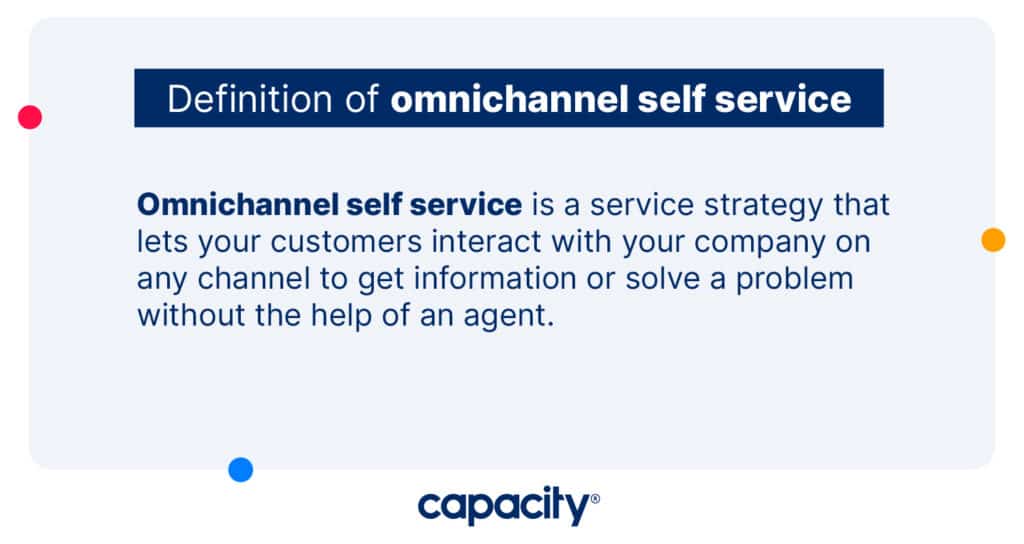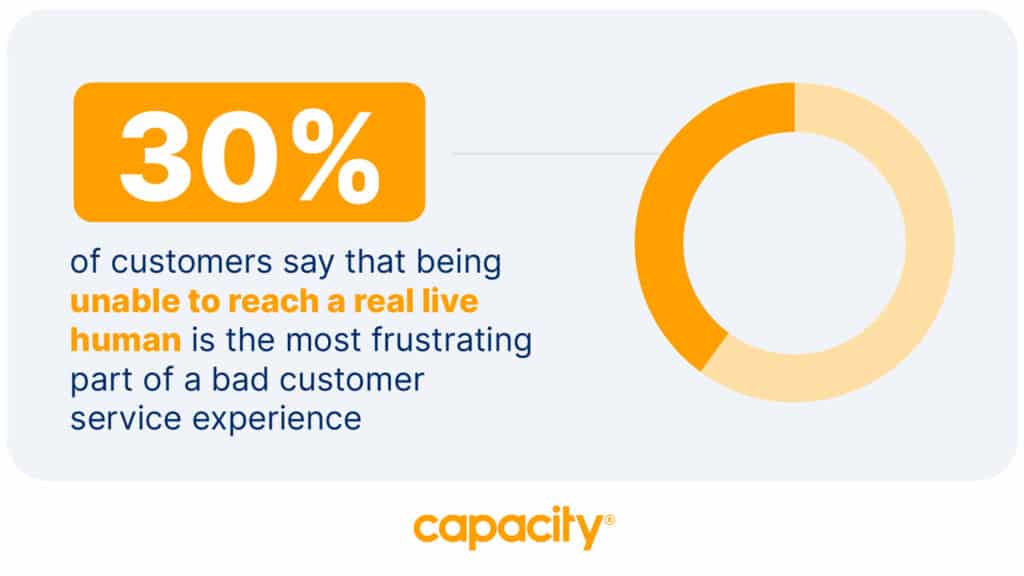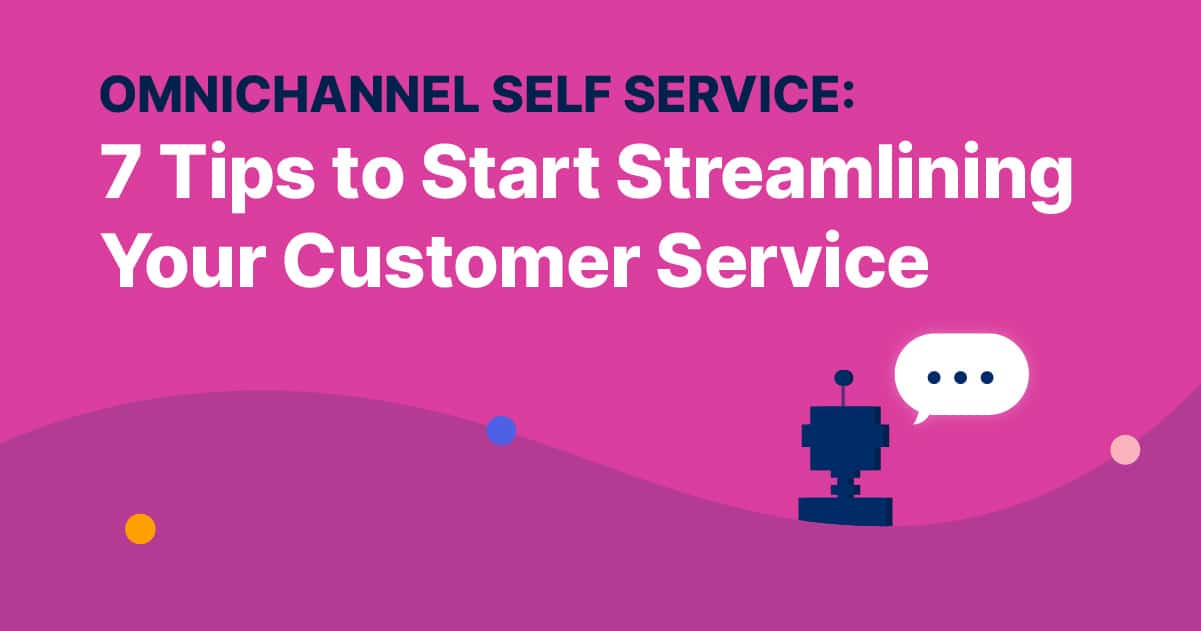Your customers don’t want to talk to you. Not immediately, anyway.
It’s nothing personal. They just crave convenience and speed. When they have an issue, they want a solution, and they wanted it 10 minutes ago. But they’re willing to put in the work on their own. In fact, they want to put in the work on their own. Some 89% of customers say they expect to use self service when dealing with everyday problems.
As your customers become increasingly tech-savvy, they’re more and more comfortable with the idea of using bots, automation, and intelligent tools to address issues. Omnichannel self service is everywhere.
That’s why having an omnichannel self service strategy is so important. It doesn’t just give customers what they want. It also frees up customer service agents to focus on more complex issues that require a human touch. But how do you get started?
Let’s start by understanding what omnichannel self service really is.
What is omnichannel self service?

Omnichannel self service is a strategy that lets customers get help or information from your company without talking to an agent. They can do this on the phone, email, chat, SMS, social media, or even your website.
The “omnichannel” aspect means customers can move between different channels and still receive a consistent experience. For instance, a customer might start a conversation with a chatbot on your website. But then they may need to leave their computer, so they move the conversation to an SMS exchange without repeating their issue or starting over.
There are a ton of options to get started with omnichannel self service, whether it’s a knowledge base or chatbot, an FAQ page, or an interactive troubleshooting guide. But with each, the idea is to give your customers the answers they need to resolve simple issues on their own. It gives them the autonomy to solve their problems, and it gives you more time to focus on complicated customer service inquiries.
Now that we understand what omnichannel self service is let’s look at seven tips to get started with a strategy.

7 tips for getting started with omnichannel self service
1. Start small
You don’t have to put every single type of omnichannel self service in place all at once. Start small and work your way up as you become more comfortable. Start with one brand voice, one platform, and a few basic FAQs to give customers the information they need.
2. Know your customers
The best self service solutions are tailored to the needs of your customers. Take the time to get to know them so that you understand their pain points, questions, and problems. Figure out what they’re actually asking for. And then, do some research about your customer trends and try to identify common requests that self service can solve. Knowing what your customers want will help you build a solution they’ll actually use (and see value in).
3. Use automation
Automation is key to an omnichannel self service strategy. You can add chatbots to your website or automated ticket routing to your helpdesk. What’s more, with machine learning and natural language processing, automation can identify a common question and serve up an answer without tagging in an agent.
4. Make it personalized
Self service isn’t just about providing answers – it’s also about creating a personalized customer experience. Add features like personal recommendations or tailored responses to give customers more options specifically catered to them.
5. Foster interaction
The idea behind omnichannel self service is for customers to interact with your company without the help of an agent. Focus on using interactive tools like chatbots or knowledge bases that make it easier for customers to find what they need.

Automate Your Work
Capacity’s enterprise AI chatbot can help:
- Answer FAQs anytime, anywhere
- Find relevant documents within seconds
- Give surveys and collect feedback
6. Make it secure
Whenever customers interact with your company, you must be sure their information is secure. Prioritize security and privacy to protect both your company and your customers. Start by conducting a risk assessment. Then consider adding a multi-factor authentication and using encryption for data transfers. And then, make sure you regularly test your systems to make sure hackers have not exploited them.
7. Measure and monitor
Self service solutions should always be evolving based on customer input and feedback. Measure key performance indicators like resolution rate and customer experience score, so you can continually improve as needed.
Pairing omnichannel self service with agent support
Self service is more than just a way to deflect customers away from your support team – it’s an effective strategy that can work hand-in-hand with human assistance to give your customers the experience they expect.

Some 30% of customers say that being unable to reach a real live human is the most frustrating part of a bad customer service experience. So as you build out your self service strategy, think about how it can work in tandem with your agents. Make sure it’s still easy for your customers to connect with your team when needed. If a customer can’t complete an issue autonomously, give them an easy way to reach you.
Customers will be forced to contact your support team without an omnichannel self service strategy. Or worse, they might decide to stop doing business with your company. Make it easy for your customers to solve the most basic issues on their own while keeping an open line to your support team.
Ready to give self service a try in your contact center? Try Capacity for free!





